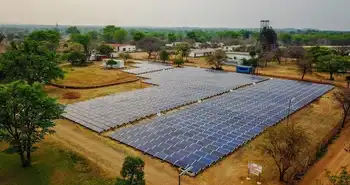Toronto has a “baby blackout”
By Toronto Star
Arc Flash Training CSA Z462 - Electrical Safety Essentials
Our customized live online or in‑person group training can be delivered to your staff at your location.

- Live Online
- 6 hours Instructor-led
- Group Training Available
When a Hydro One breaker burst into flames on Kipling Ave., everything went quiet. The air conditioners stopped humming, street lights began to flash and computer screens went black.
The outage had many fearing a repeat of the infamous 2003 blackout, when a chain of errors at an Ohio power company plunged 50 million people into darkness and the city into chaos. But those who love to regale out-of-town friends with stories of Toronto-soaked despair were sorely disappointed.
This time around, Toronto was calm. GO trains ran on schedule, TTC problems were minimal and the mayor was updating everybody on Twitter. Nobody was hurt. People were only hot and frustrated, on the warmest day of the year.
Toronto Hydro had earlier in the day reminded customers to turn down the air conditioning during the heat wave. TuesdayÂ’s expected high is a sweaty 33 Celsius.
According to police and fire officials, a breaker the size of a garden shed exploded at 4:42 p.m. The Manby Station breaker acts as a “giant switch,” distributing Hydro One’s electricity to Toronto Hydro.
Approximately 250,000 homes in an area roughly bordered by Spadina Ave., Eglinton Ave., Keele St. and Dundas St., plus other isolated pockets, were darkened, giving an estimated 400,000 people a licence to complain or leave work early, depending on how blackout-scarred their bosses were.
By late July 5, only 1,000 had a legitimate gripe, as power came back on for most of the city.
“We were just sitting there on our computers, working, when suddenly the power went out, phones and everything,” said Koran Channa who works at 222 Bay St. “I walked down from the 28th floor. I had to switch out of my heels.”
At the Royal York Hotel, the lights even turned off on Prince Philip, who was presenting the Duke of Edinburgh Awards. It was a pretty nervy move from the power grid.
“I thought it was a terrorist attack or something,” said Vello Keelmann, who was among 135 young people receiving an award from the Duke himself. Fortunately, the hotel had emergency lighting which flickered on almost immediately, and the ceremony went ahead.
Across the city, fire crews responded to dozens of elevator rescue calls. One man stuck in a downtown tower sent a plea for help to the mayor.
“I use a wheelchair and have been stuck on the 18th floor of the TD tower. Send help!” Joel Dembe wrote on Twitter.
Within seconds, the mayor called him.
“That’s the 21st century for you. He’s put me in touch with the Toronto Fire Department and the emergency evacuation centre,” Dembe said before the elevators in his building came back to life.
All told, 920 megawatts of power were lost because of the fire, enough to power a million homes.
“If you lost 250,000 homes after losing 900 megawatts, they stopped it in half time at least. It should have affected a million homes,” said Frank Finnie, a power consultant with Missouri-based Power Generation Experts.
While the cause is still unknown, a recent shareholder report notes the breakers are aging.
“The Manby Station currently has spare short circuit capacity, but its circuit breakers are nearing their end of life and will be replaced by 2013,” the Hydro One report says.
“Obviously we inspect and maintain our equipment regularly,” said spokesperson Danielle Gauvin. “That particular equipment was inspected in 2008. There is also a schedule of maintenance, inspections and repairs based on good engineering principles.”
Alexandra Campbell, the spokesperson for the Independent Electricity System, said the outage had nothing to do with lack of power available.
“In fact, we had plenty of power available to meet demand today. This is quite likely completely unrelated to the fact that it was hot,” she said.
Nevertheless, Mayor David Miller has some advice for you, via Twitter once again.
“... maybe tomorrow a bit less AC plz,” he wrote.
LOL. For surezies.











